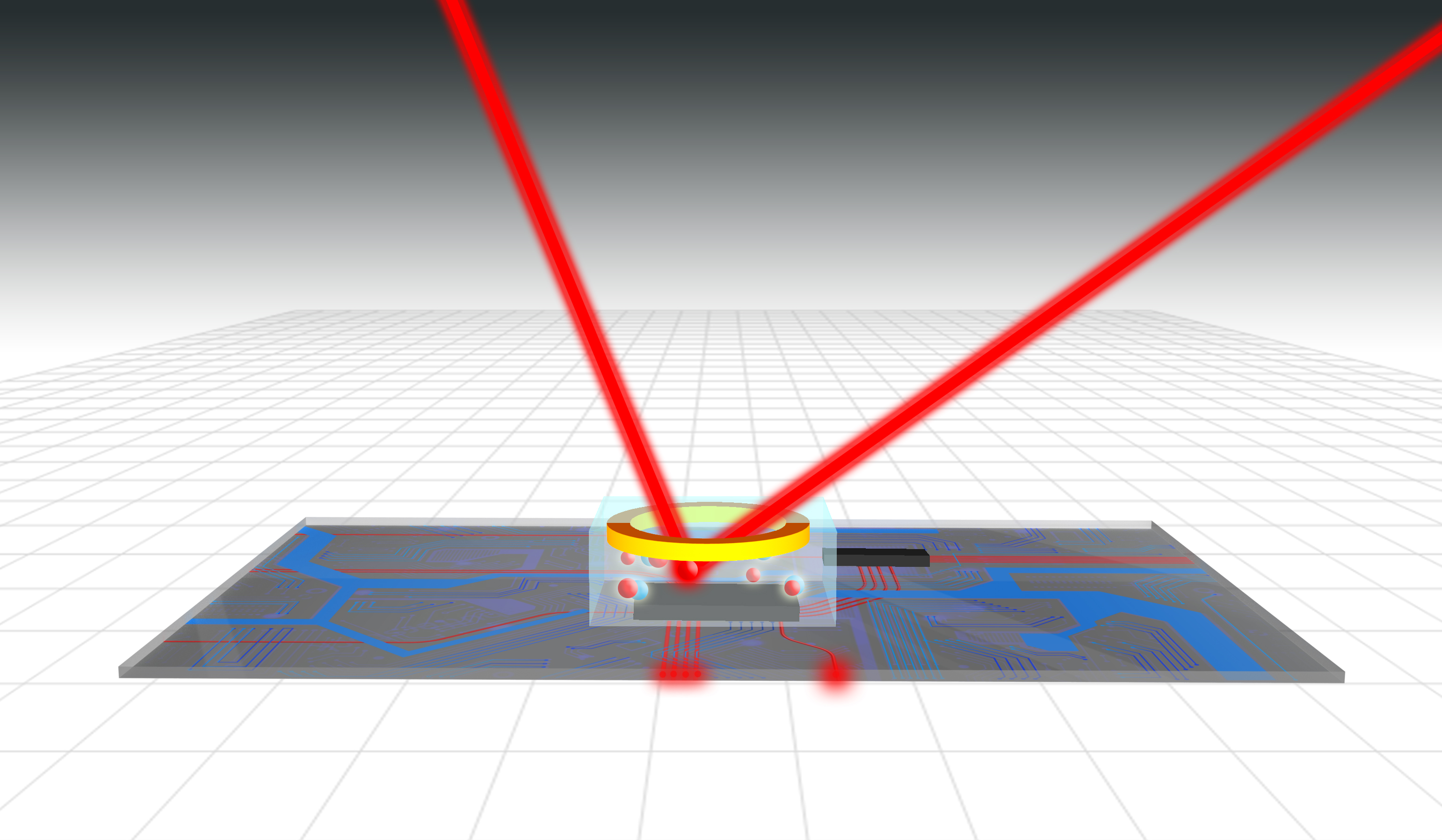Fraunhofer researchers use quantum photonics for tap-proof channels and extremely precise sensors
Yes, we quant!
Researchers at Fraunhofer IZM want to bring quantum physics from the textbooks to reality. Using optical glass-integrated waveguides, they are developing a universal platform that enables the setup of solutions for tap-proof quantum communication and high-precision quantum sensors in miniaturized form, quickly and according to customer requirements. Why the combination of photonics and quanta is particularly well suited and which future fields are opening up thanks to quantum technologies.

Schrödinger's cat is in a box – is it alive or dead? While the box is closed, the pet can be in both states, if you stop the experiment and open the box, one state becomes fixed. What at first glance seems like a philosophical paradox is a basic principle of quantum theory, superposition. It is one of the many peculiarities of quanta that lay the foundation of many physical laws.
Quantum technologies have been part of our everyday life for over half a century. For example, the classic laser and atomic clock are first-generation quantum-technology devices. Researchers are now ushering in a new era: They cannot only read out the states of individual quanta, but also actively stimulate and even manipulate them. This second quantum revolution opens up completely new applications in communication, simulation, computing and sensor technology. However, quite complex and energy-intensive laboratory set-ups are currently still required to perform measurements or calculations using so-called Q-bits.
Researchers at the Fraunhofer Institute for Reliability and Microintegration IZM have therefore set out to take the step from basic university research to industrial and commercial applications. In order to implement cost-effective devices, they rely on technical solutions from the telecommunications industry. There, photons, i.e. light particles, are the carriers of quantum mechanical information. Infrastructures for their transmission and manipulation already exist in the form of special circuit boards and protocols.
Researchers see a great opportunity for solutions in quantum communication through the use of optical waveguides integrated into glass. The clear advantage of glass fibres over semiconductors is that glass is transparent to near-infrared waves, which are used in quantum technologies. In addition, glass as an optical waveguide has significantly lower losses, ensures less residual light scattering, is more cost-effective in production and can be recycled.
Secure communication with quantum cryptography
The use of these glass-based chips in conjunction with quantum photonics makes it possible to realize tap-proof communication channels, which are indispensable for public security, banking and the demand for sovereign data protection. The crux of quantum photonic encoding is that the state of a photon inevitably changes after it has been read out. This enables the recipient to see whether the information has been intercepted, read out or reproduced on its way. Detecting this interception in the communication channel and thus preventing data leaks and hacker attacks is not possible with classic electronic encryption methods.
Quantum sensors for previously unattained accuracy in measurement
Experts in quantum sensor technology are taking advantage of the fact that Q-bits can be superimposed like waves. The resulting quantum mechanical phase reacts extremely sensitively, making it possible to measure even individual atoms. In this way, sensors, e.g. for gravitational and magnetic fields, can be created that achieve a previously unattained level of accuracy compared to classic sensors.
In addition, this solution enables measurements to be made at an absolute level, eliminating the need to calibrate sensors.
To ensure that the high-precision sensors are not disturbed by unwanted environmental influences, the researchers are developing insulating vacuum chambers on glass, so that the quantum sensors can also be used outside of laboratories.
Dr. Wojciech Lewoczko-Adamczyk and Oliver Kirsch, researchers at Fraunhofer IZM, know the advantages of quantum sensor technology: "The vacuum chambers on glass make it possible to use quantum mechanical sensors in places where it was previously unthinkable, for example as biosensors. By measuring individual atoms, whose spectra react to magnetic fields, light can be used to gain insights into the magnetic fields of the heart or brain, which can supplement medical imaging with CT or MRT.” The researchers are trying to miniaturize the sensor systems to such an extent that patients can even move freely during the examination.
"Quantum sensors can also make a contribution to food research and medical technology, since even if there are extremely low concentrations of viruses or bacteria in a solution, it is possible to measure far beyond conventional standards," Oliver Kirsch continues.
However, the researchers' vision is bigger than just the development of individual products: they want to create a universal platform that will enable quantum photonic devices to be built quickly and in accordance with customer requirements. For this purpose, waveguides of a few micrometres in diameter are integrated into a glass substrate to guide the light to where the quanta can be stimulated and read out. In addition, the glass substrate is metallised with structures so that it also transmits electrical signals. This creates a platform that combines optical and electrical information at quantum level – an electro-optical circuit board.
To reach this goal, the researchers of the Quantum Photonic Packaging group have optimized their photonic technologies to the point where they are suitable for use in the quantum range. In several projects they want to advance quantum technologies at Fraunhofer IZM to the stage of industrial production.
The "QuantumPackagingLab" is funded by the EU and the State of Berlin as part of the European Regional Development Fund.
Last modified:
 Fraunhofer Institute for Reliability and Microintegration IZM
Fraunhofer Institute for Reliability and Microintegration IZM